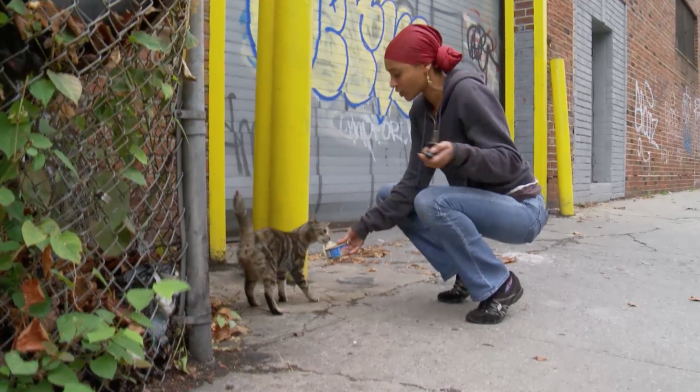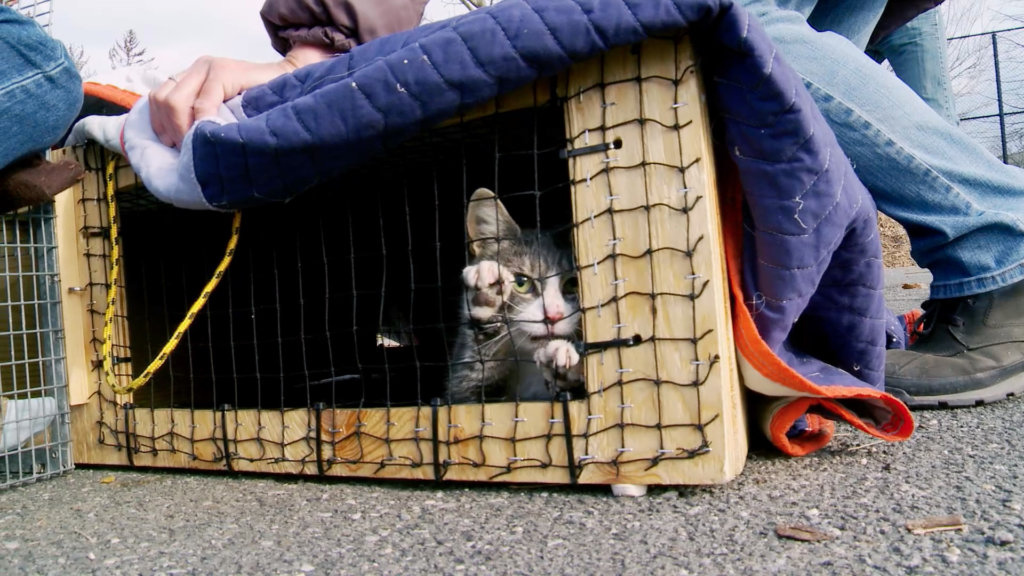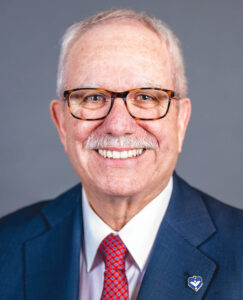There’s something truly heartbreaking, yet heartwarming about the new documentary “The Cat Rescuers,” which follows a group of cat lovers as they comb the streets of Brooklyn in search of animals in need. You don’t have to be a cat lover to appreciate the lengths to which these individuals go in order to aid and rescue homeless cats.
The film, produced and directed by Rob Fruchtman and Steven Lawrence, will open July 5 at NYC’s IFC Center followed by a roll-out at select venues nationwide.
The documentary was filmed in several Brooklyn neighborhoods, including Bay Ridge, Sunset Park, Coney Island, Bed-Stuy and Lefferts Gardens. It follows four very different activists and cat lovers who devote their lives to controlling the stray cat population and finding cats new homes off the streets.
The Cat Rescuers aren’t wealthy — they spend their own money and free time getting cats spayed and neutered, and fostering strays in their homes.
We learn that there are over 500,000 street cats struggling to survive in New York City, and about what the protagonists see as the city’s unwillingness to address the problem. As viewers, we are intrigued watching volunteers like Latonya “Sassee” Walker, Claire Corey, Stuart Siet and Tara Green come to their aid.
These dedicated activists wander through the borough’s alleys, backyards and housing projects to trap cats, get them fixed, return them to their colonies, or, best of all, place them for adoption.
The film begins in Coney Island Creek, where it’s noted that the cats were there before Superstorm Sandy but somehow survived. It’s painful to watch the cats wandering along the highway rails before two rescuers arrive. Green promises, “Life’s gonna get better for you, honey. No more babies, no more stress.”
We meet Walker, who brings the saved cats to an animal clinic in Gravesend, and explains that the money for all the medicine and vaccinations required comes out of her own pocket.
Next, the documentary takes us to the projects in Canarsie where Walker knows all the stray cats and feeds them. She even houses a number of them in her apartment. With her meager earnings, she spends at least $300 a month on cat food and litter. Walker is determined to find them homes, saying, “Don’t talk about it, be about it.”
Rescuer Corey picks up cats from Animal Care and Control and takes them to her Bed-Stuy apartment. She got involved when she failed to aid a cat in distress nine years earlier, and has since vowed to help them in any way she can.
One of the most heartbreaking scenes in the film is when Claire scrolls though the shelter kill list of cats that will be euthanized if they are not adopted. She says that it’s not ACC that’s the problem, but humans who don’t get their pets spayed and neutered.
There are many incredibly moving scenes throughout the documentary which was brilliantly filmed by Fruchtman and Lawrence.
“While I knew our film would be about the ‘other’ cats, the ones who we don’t see, it’s also about the people who see them, worry about them, feel them as fellow beings worthy of our care,” Fruchtman told this paper. “Brooklyn is our canvas but the story is the same almost everywhere regardless of language or border.”
Fruchtman won the 2002 Sundance Film Festival Documentary Director Award for “Sister Helen,” which aired on HBO. He’s also won three Emmys for his work with PBS.
Lawrence’s documentaries have appeared on PBS, MTV and A&E. He also produced three films for director Michael Apted including “Married in America,” an ongoing documentary about nine marriages.
“I wanted to make a film that looks at a fundamental question my wife and I were faced with: What should you do if you come across a starving or injured cat that’s homeless?” explained Lawrence.
“For the rescuers in the film the answer was that they must help,” he went on. “For Rob and me, the film was a way to make visible both the plight of the cats — our fellow sentient beings — and the heroic work the rescuers do every day. And we also wanted to show how, with a small investment from city government, we could vastly reduce the homeless cat population on our streets.”
Fruchtman and Lawrence have created a unique documentary that draws viewers into the narrative and lets them witness the truly heroic actions of the rescuers. For example, when someone brings a 12-year-old cat to ACC Director of Admissions Aleah Simpson, she informs him that the prospects of finding a home for an older cat are harder and the cat as a last resort could be euthanized. He signs it over anyway and we watch in consternation as the man just shakes his head and leaves.
And then we are taken to Kensington at 3 a.m. where we meet Stu, who leaves his house in the early morning to feed the cats. His words may best summarize the entire scope of the documentary.
“I find it almost an honor to have a whole trail of cats leading me down the street,” he says. And it’s also an honor for viewers to meet and follow these heroic individuals whose entire mission is to save the lives of helpless felines.



 Relay For Life gets moving for new year
Relay For Life gets moving for new year  Fort Hamilton advisory board reelects Guarinello
Fort Hamilton advisory board reelects Guarinello